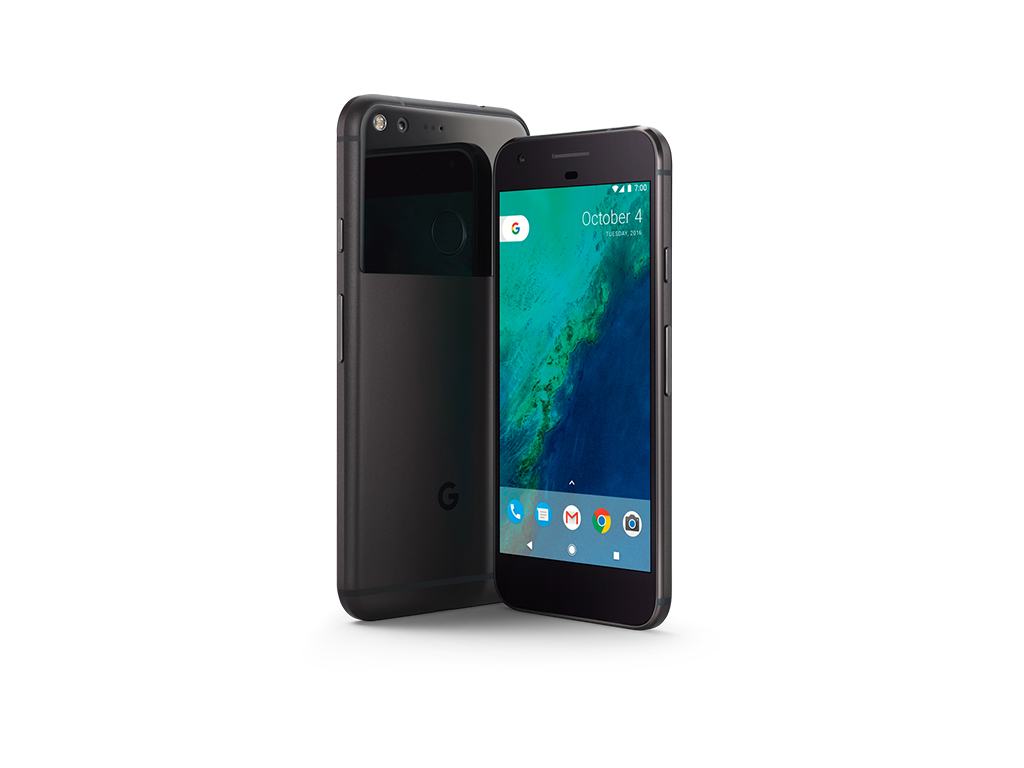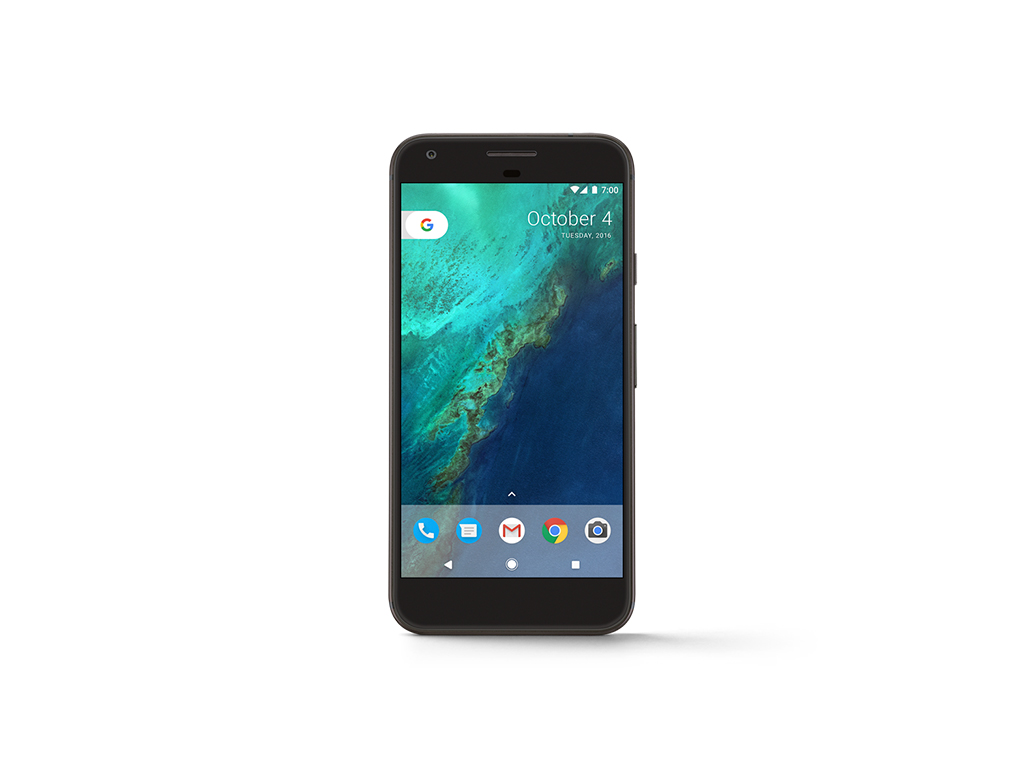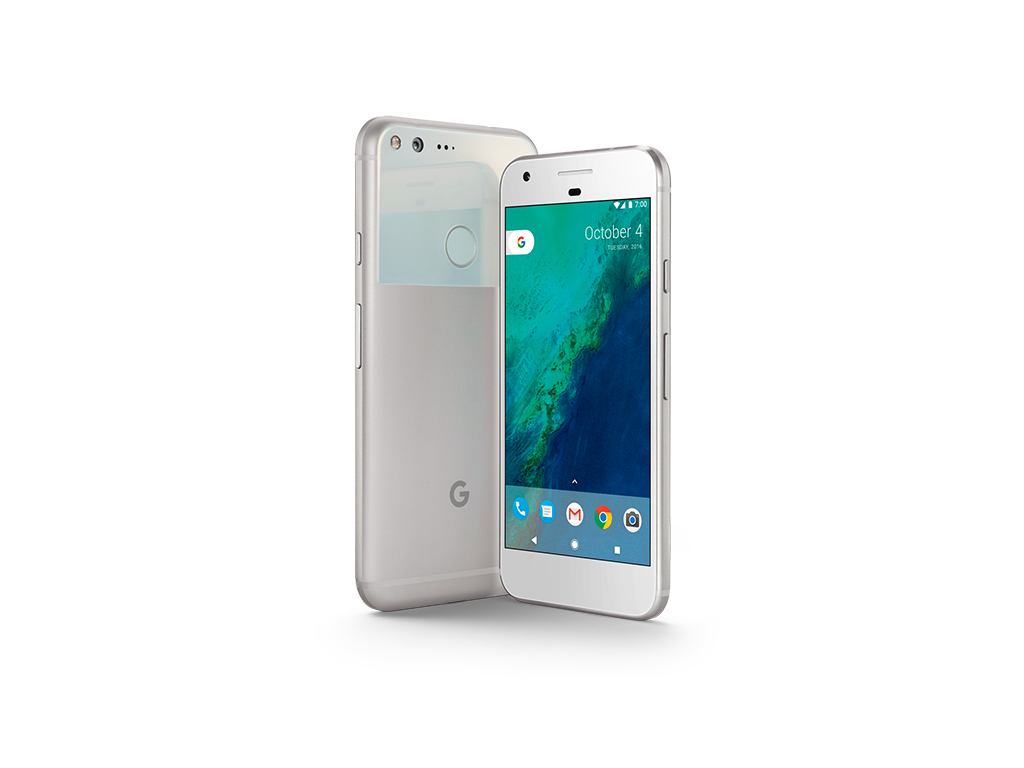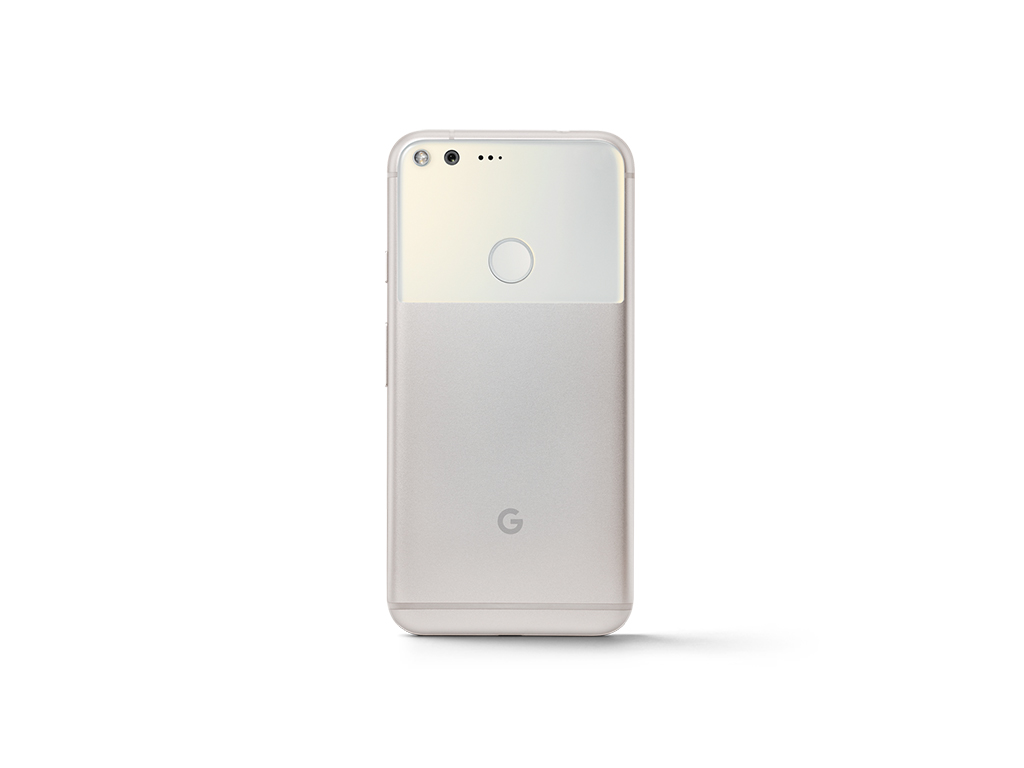Google has always produced the Nexus models in cooperation with well-known smartphone manufacturers, the most prominent being HTC, Huawei, LG, and Samsung. However, the new Pixel (5-inch) and Pixel XL (5.5-inch) models are 100% Google smartphones. This means that the search engine giant has full control over developing, manufacturing, and distributing the phones. The manufacturer of the Pixel devices, HTC, only acts as a contract manufacturer and so has absolutely no influence on the end product. That's why there is no trace of HTC to be found on the casings or packaging. Instead, a subtle "G" adorns the reverse of the smartphone. Google is also breaking the hardware strategy of previous years with the prices. While the Nexus range has always prioritised good value for money, the Pixel smartphones are aiming to be premium products like the iPhone: the small Pixel starts at €759 (32 GB), and the larger at €899. Like with Apple, the surcharge for a memory upgrade is quite meaty: the 128 GB model cost an extra €140, meaning the XL model breaks the €1000 mark. Those interested should properly consider which model they want before buying, because a subsequent micro SD memory upgrade is not possible.






That is pretty steep. Apple can get away with that, because their customers are used to it, but Google? To date, the company has not promoted itself as a manufacturer of premium smartphones and there are many great alternatives in the Android range, like Samsung and Sony. In any case, the Pixel XL's packaging makes it clear that Google really means it with its premium strategy. The box has a high-end design, the instruction manual is elaborately folded, and the contents lavish - at least at first glance. The mains adapter with USB Type-C jack has a high output power (18 watts) and fully charges the battery in an hour and a half. In addition to the obligatory cable with USB-C on both ends that can charge the phone and connect it to modern computers, Google also includes a USB-C to USB-A cable. It also comes with an adapter with a USB-A jack, which allows you to connect USB sticks with the Pixel. However, adapters and cables cannot hide the fact that there are no headphones inside.
PRO
- Top look and feel and craftsmanship
- Distinct and unmistakeable design
- Brilliant OLED display with QHD resolution
- Camera with very good picture quality
- Unique Android system with lots of extras and update guarantee
- Long battery duration
CONtra
- Casing not waterproof
- Micro SD memory upgrade not possible
- Disappointing wireless capabilities
- High price
The design is an acquired taste
Although the design options for smartphones are limited by the shape and, essentially, everything has already been tried, Google has still managed to pull off a unique look for the phone. Whether you see that as successful or not, is another question. The back, the upper third of which is covered with a piece of glass, is at least an acquired taste. On the other hand, the look and feel of the phone is undeniably excellent: the casing is made of a seamless, particularly solid aluminium alloy, giving it great stability. The Pixel XL sits very nicely in the hand thanks to the sides being particularly curved. However, you cannot use the 5.5-inch phone with one hand, measuring in at 155 x 76 mm. Like Apple. Google has left wide edges around the screen, while other manufacturers like Huawei do a better job of this. The craftsmanship is impeccable, but the Pixel XL does not have a high IP rating: its IP53 rating means it is only protected against splashes, which is a clear disadvantage compared to the competition. The top-of-the-range models from Apple, Samsung, and Sony are all protected against temporary submersion with their IP67 certification. Google is only offering the Pixel XL in two colour variations at the moment: silver (with a white front) and anthracite (with a black front).
Power galore and strong camera
With intense colours, bold contracts, and a great viewing angle range, the 5.5-inch large display is a feast for the eyes. The brightness is very good for an OLED at 405 candelas and the high resolution of 2560 x 1440 pixels provides an incredibly sharp image. This also makes the smartphone particularly suitable for Google's new VR platform, Daydream, which is a feature of the current Android 7. However, you will need the Daydream View to dive into Google's VR world. The View is a pair of VR glasses that the search engine giant is offering for €69. The smartphone has enough processing power for all types of applications, from gaming to VR. Under the screen lies Qualcomm's brand-new, top-of-the-range model, the Snapdragon 821. The octa-core processor, a further development in the 820 generation, is supported by 4 GB of RAM and clocks in up to 2.15 GHz in operation. In benchmarks the Pixel XL is on the same level as Samsung's Galaxy S7 - only the iPhone 7 is even faster. The camera can snap with the best of them too, but still cannot surpass them. Google states that the "best scoring smartphone camera" is built into the Pixel, based on a ranking by the optics specialists at DxOMark.
The ranking sees the Pixel (XL) with the highest score at 89 points, leaving behind the Galaxy S7 (88 points) and the iPhone 7 (86 points). We came to a different conclusion: the Sony IMX378 sensor with a 12.3-megapixel resolution and f/2.0 lens takes amazing daylight photos with impressive definition, but does not match up to Apple's and Samsung's top models in poor lighting conditions. It's apparent that the sensor captures less light, which leads to more distinct image noise that sets in sooner. Skipping out on optical image stabilisation (OIS) is most certainly a contributing factor here. This does not have any negative effects on the video quality, because the electronic image stabilisation compensates nicely for any camera wobble, even with 4K recordings. Overall, the Pixel XL delivers impressive camera performance. The speed is high and the quality is right, along with a sophisticated camera app with numerous extras including allowing you to simulate the lens opening and manipulate the background focus (bokeh). The front camera is high-quality as well. Another aspect speaks for the Pixel: owners can save an unlimited number of photos and videos in full resolution and quality in the Google Cloud, which considering the 22.4 GB of available space on the 32 GB model is severely required. Unlimited online storage is just one of the exclusive advantages that Google grants Pixel buyers. Our overview further below makes it clear that it's not the hardware that provides reasons to buy the Pixel XL, but rather the software.
The system makes the difference
This finding is reinforced by results from our Testlab. The wireless capabilities hang around the mid-table, with the UMTS network results being satisfactory and the GSM network results just being acceptable. However, the LTE network managed to score 25 points or "good". There is better news for the battery duration: with a 3450-mAh-strong battery the Google phone manages a very good 9:05 hours, which means (depending on your usage) it is possible go two days without charging. That's not enough for an unconditional recommendation though. An overall score of 414 points is too low for an €800 smartphone, especially when there are many alternatives that are cheaper and better. From a software point of view, Google does throw some convincing arguments into the equation. The best Android version that we know is installed on the Pixel XL. Whether you consider the software support, functionality or the interface design, the Pixel XL stands at the forefront. ANDREAS SEEGER

